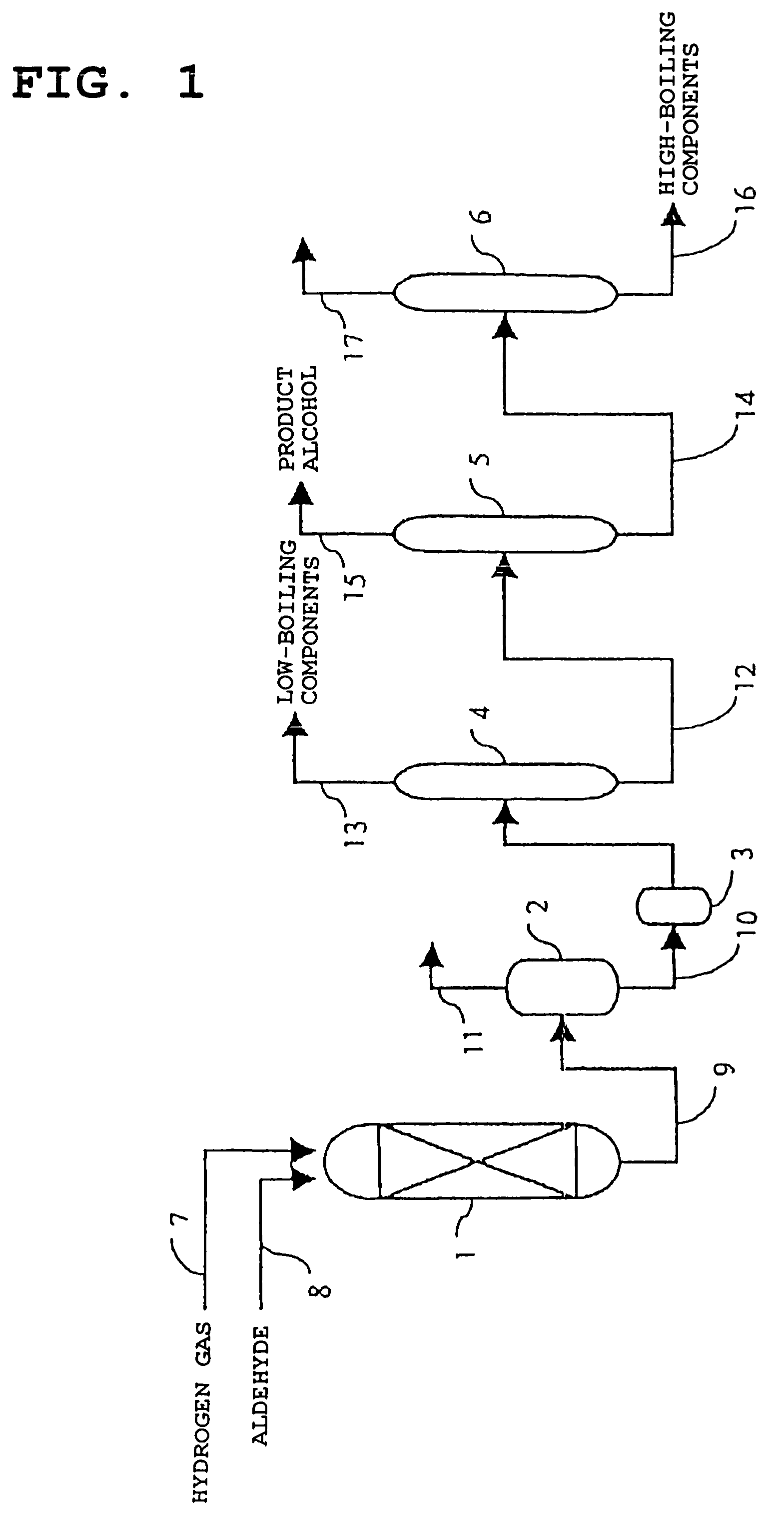Process for producing alcohol
a technology of process and alcohol, applied in the field of process for producing alcohol, can solve the problems of facility increasing the cost of reboiler heat source, and reducing the aldehyde concentration in the product alcohol. , to achieve the effect of reducing the burden, reducing the aldehyde concentration in the product alcohol, and increasing the running cos
- Summary
- Abstract
- Description
- Claims
- Application Information
AI Technical Summary
Benefits of technology
Problems solved by technology
Method used
Image
Examples
example 1
[0072]Crude nonyl alcohol containing a catalyst powder, which had been obtained by hydrogenating nonyl aldehyde using a solid catalyst, was taken out of a nonyl alcohol plant and the catalyst powder was removed by means of a filter having a mesh size of 0.1 μm (the catalyst concentration after the removal was 10 wt ppm). Then, under a nitrogen atmosphere, 200 mL of the crude nonyl alcohol was charged into a 1 L round-bottom flask and a heating test for 7 hours was carried out under a pressure of 60 mmHgA at a temperature of 136° C.
[0073]The results are shown in Table 1.
example 2
[0085]Under an air atmosphere, 100 cc of a 2-ethylhexanol sample was charged into a 200 cc round-bottom flask and a powder obtained by supporting nickel and chromium as active components on diatomaceous earth was added thereto as a hydrogenation catalyst so that catalyst concentration became 14 wt ppm. The temperature was elevated over the period of about 5 minutes and sampling was performed after 0 minute, 10 minutes, and 60 minutes from the point of time when the temperature reached 140° C., whereby the concentration of 2-ethylhexanal as an aldehyde was analyzed.
[0086]The results are shown in Table 2.
PUM
| Property | Measurement | Unit |
|---|---|---|
| temperature | aaaaa | aaaaa |
| pressure | aaaaa | aaaaa |
| pressure | aaaaa | aaaaa |
Abstract
Description
Claims
Application Information
 Login to View More
Login to View More - R&D
- Intellectual Property
- Life Sciences
- Materials
- Tech Scout
- Unparalleled Data Quality
- Higher Quality Content
- 60% Fewer Hallucinations
Browse by: Latest US Patents, China's latest patents, Technical Efficacy Thesaurus, Application Domain, Technology Topic, Popular Technical Reports.
© 2025 PatSnap. All rights reserved.Legal|Privacy policy|Modern Slavery Act Transparency Statement|Sitemap|About US| Contact US: help@patsnap.com

